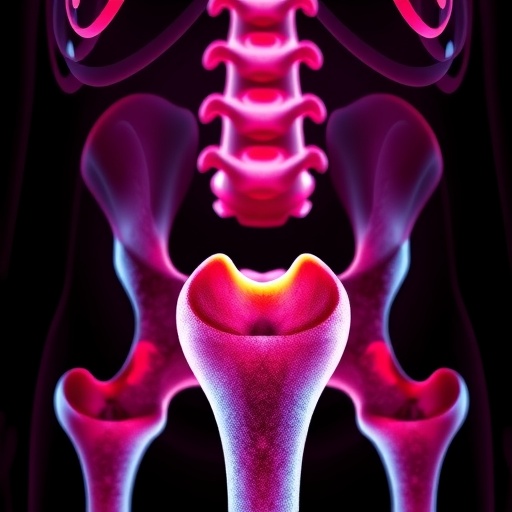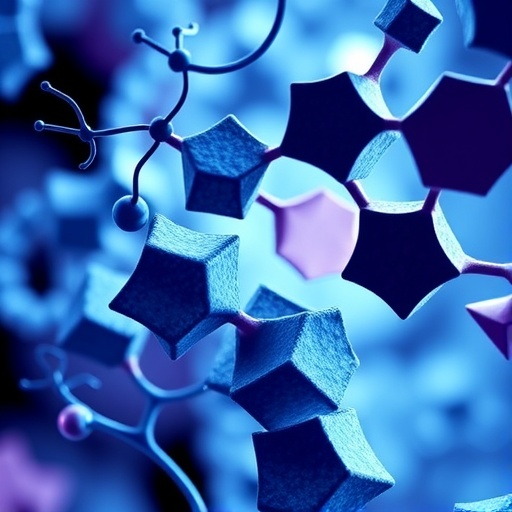(PHILADELPHIA) – Certain molecular drivers of cancer growth are "undruggable" – it's been nearly impossible to develop chemicals that would block their action and prevent cancer growth. Many of these molecules function by passing cancer-promoting information through a gate in the nucleus, where the instructions are carried out. Researchers at the Sidney Kimmel Cancer Center – Jefferson Health have found a way to block the nuclear gates used by these molecules, and show that this inhibition can halt aggressive prostate cancer in mice bearing human tumors.
The research, co-led by Veronica Rodriguez-Bravo, PhD, and Josep Domingo-Domenech, MD, PhD, published in Cell August 9, 2018.
"We found that a particular gatekeeper, the nuclear pore protein called POM121, traffics molecules that boost tumor aggressiveness," said first and co-corresponding author Dr. Rodriguez-Bravo, Assistant Professor of Cancer Biology at Jefferson (Philadelphia University + Thomas Jefferson University). "Blocking this gatekeeper prevents several molecules from reaching their targets in the nucleus, thus decreasing tumor growth." The researchers also showed that blocking POM121 transport helps restore chemotherapy efficacy in preclinical models of the disease.
This is the first demonstration that nuclear pore proteins may be effective anti-cancer targets for prostate cancer.
Using computational biology techniques that integrate genetic information from prostate cancer patients and experimental models, the investigators dissected the functions of nuclear pore proteins across the course of the disease from early to late stages. They discovered that an abundance of the POM121 component of the nuclear pore was associated with aggressive tumors that continue to grow despite standard therapy.
The researchers then showed that blocking POM121 or disrupting its partner Importin β could block molecules such as MYC, E2F1, and the androgen receptor – three molecules that drive aggressive prostate cancer – from reaching the nucleus to activate tumor growth and spread.
"This study shows that blocking the import machinery may be an effective strategy to target the undruggable," said co-corresponding author Dr. Domingo-Domenech Associate Professor of Medical Oncology at the Sidney Kimmel Medical College at Jefferson. "For example, MYC is an oncogenic transcription factor wherein successful direct blockage does not exist. We provide a remarkable approach to target not only MYC but also E2F1 by impairing their nuclear import, critical for their oncogenic function in prostate cancer."
Although about 85-90 percent of men diagnosed at early stages of prostate cancer are cured after receiving surgery or radiotherapy, the remaining 10-15 percent of men have an aggressive disease course. This advanced disease is characterized by the appearance of tumors in distant organs (metastasis) and the acquisition of resistance to hormone therapy targeting the androgen receptor and anticancer drugs, which precede death in most prostate cancer patients. "Prostate cancer remains a major health challenge, as the second leading cause of cancer death in this country. This study represent a major breakthrough in identifying a new means for targeting advanced prostate cancers," said Karen Knudsen, PhD, Director of the NCI-designated Sidney Kimmel Cancer Center – Jefferson Health, and a co-author on the study. Jefferson is one of eight NCI-designated cancer centers nationally with a Prostate Cancer Program of Excellence.
Drs. Rodriguez-Bravo and Domingo-Domenech and colleagues also demonstrated that combining inhibitors of the POM121-Importin β axis with standard chemotherapy regimens decreased tumor size in mouse models bearing human prostate cancer tumors.
The researchers plan to continue the work by identifying specific chemical compounds against POM121 and determine their efficacy and toxicity for use in human clinical trials.
###
The study was supported by NIH/NCI grants K22 CA207458 and R01 CA207311.
Article reference: Veronica Rodriguez-Bravo, Raffaella Pippa, Won-Min Song, Marc Carceles-Cordon, Ana Dominguez-Andres, Naoto Fujiwara, Jungreem Woo, Anna P. Koh, Adam Ertel, Ravi K. Lokareddy, Alvaro Cuesta-Dominguez, Rosa S. Kim, Irene Rodriguez-Fernandez, Peiyao Li, Ronald Gordon, Hadassa Hirschfield, Josep M. Prats, E. Premkumar Reddy, Alessandro Fatatis, Daniel P. Petrylak, Leonard Gomella, W. Kevin Kelly, Scott W. Lowe, Karen E. Knudsen, Matthew D. Galsky, Gino Cingolani, Amaia Lujambio, Yujin Hoshida, Josep Domingo-Domenech, "Nuclear pores promote lethal prostate cancer by increasing POM121 driven E2F1, MYC and AR nuclear import," Cell, DOI: 10.1016/j.cell.2018.07.015, 2018.
Media contact: Edyta Zielinska, [email protected], 215-955-7359.
Media Contact
Edyta Zielinska
[email protected]
215-955-7359
@JeffersonUniv
http://www.jefferson.edu/
http://dx.doi.org/10.1016/j.cell.2018.07.015




